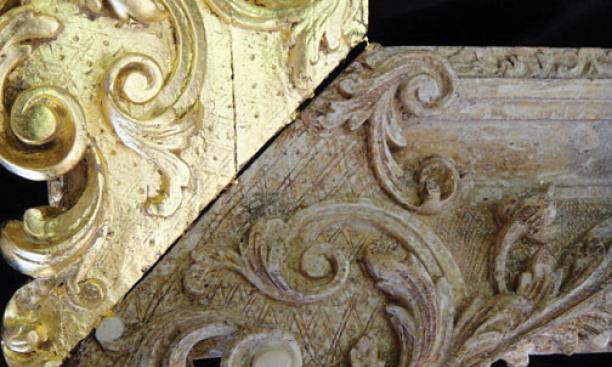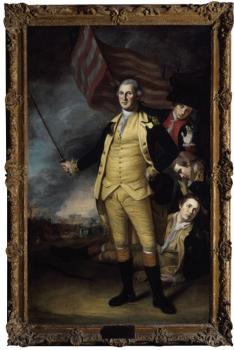

What: A 2010 restoration regilded a picture frame that Princeton University Art Museum curator Karl Kusserow calls “among the most storied in American art.”
As every tourist learns at Nassau Hall, the 252-year-old frame (shown here in original condition and during restoration) contained a portrait of King George II until his image was decapitated by a cannonball in the Battle of Princeton. Another portrait was inserted: that of George Washington (below).
The monarch was revered for giving the college its charter, but amid Revolutionary tumult a gilded crown was hacked off the top of the frame. No one knows exactly when.

In the 1777 battle, a fusillade of cannonballs drove British stragglers out of Nassau Hall, ruining the portrait in the process. The trustees commissioned Charles Willson Peale to paint “Washington at the Battle of Princeton” at just the right size to fit the handsome frame.
Twice rescued when the building caught fire, Peale’s portrait continued to grace Nassau Hall until it was removed in 2005, with its frame, to the art museum for safekeeping. A replica picture hangs in the Faculty Room today.
Restoration has added palm leaves atop the famous frame – but no crown.
Where: Princeton University Art Museum

